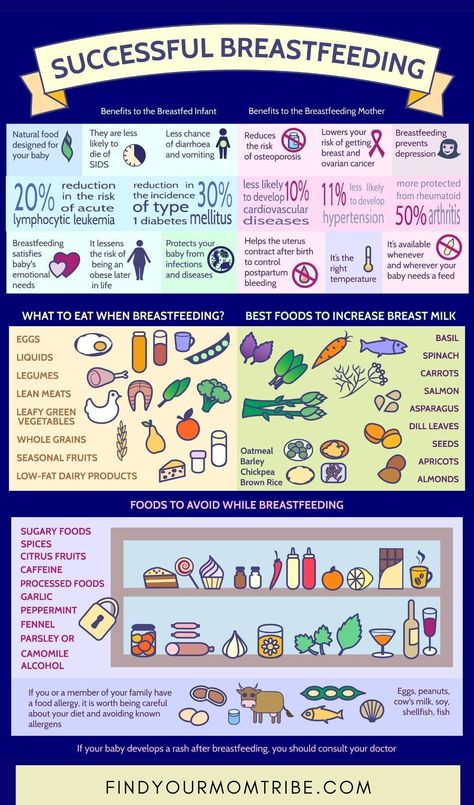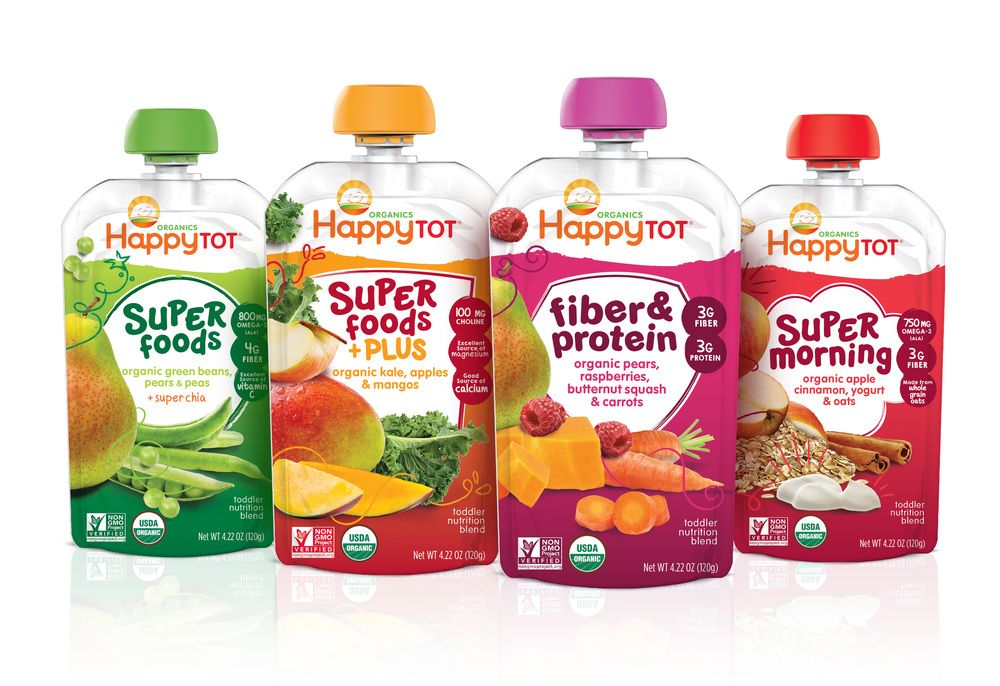What is baby led weaning foods
Ultimate Guide to Baby Led Weaning (and Best First Foods)
Learn the basics of how to do the feeding approach known as “baby led weaning” and the best first foods for baby to make starting solids easy and fun. Plus: Learn why it’s perfectly okay to use a combined approach of blw and purees.
Baby Led Weaning
The feeding approach known as “baby led weaning” or “BLW” for short, is a style of feeding infants that allows them to feed themselves right from the start. The food is offered in thick finger-size pieces and is soft and easily squishable between your fingers. This way, the food is both easy to hold but has a low risk of choking.
TIP: This method became popular about a decade ago after the publication of the Baby Led Weaning: The Essential Guide to Introducing Solid Food by UK author Gill Rapley.
BLW Baby
One of the many reasons that people are starting to opt for this style of feeding more and more is simply that it’s easy. In many cases, you can modify foods you’re already making to share with your baby and there’s not always a lot of separate cooking involved. It also allows a baby to have control over what goes into their mouths, which sets a good precedent for letting them eat intuitively from the start.
What age should I start baby led weaning?
According to the American Academy of Pediatrics, a baby is ready to start solids with baby led weaning when:
- They’ve doubled their birth weight (at least).
- They can hold their head up well and are starting to sit up unsupported.
- They show signs of being interested in food (watching you eat, reaching for food when you’re eating, etc).
- When you feed them, they are able to move the food around in their mouths—rather than spit it right out.
TIP: Look for a highchair that allows a baby to sit up relatively straight so they can have good posture and better control over their arms and hands.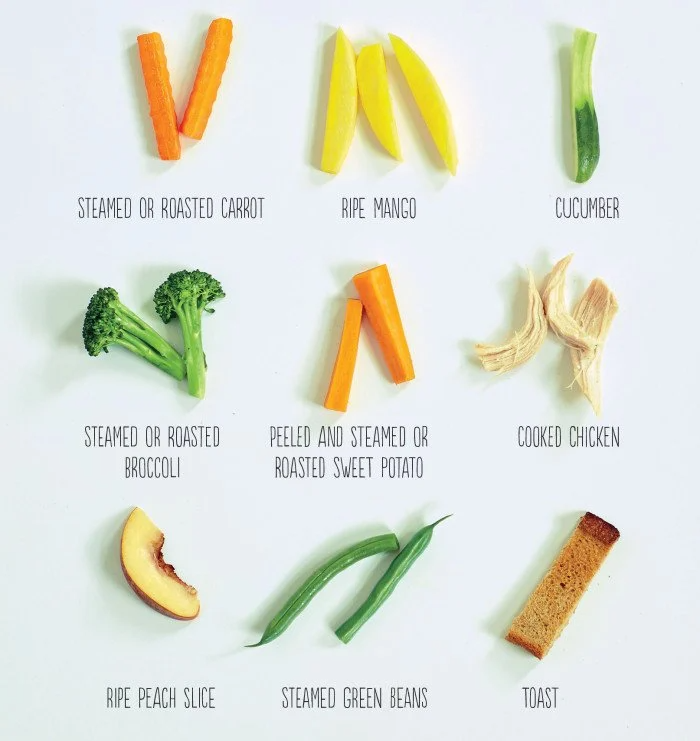
How to Start Baby Led Weaning
The first time you offer solids is such a fun milestone, so you’ll be ready once you follow these simple steps.
- Make sure baby has hit the milestones listed above to let you know that he’s ready to start.
- Get the highchair ready and adjust the straps and foot rest as needed.
- Plan to introduce water when you start solids. I recommend a trainer cup.
- Choose one food to start with and plan to offer only one food at a time.
- Stop when baby starts to fuss, turns his head away, or shows any other signs of not wanting to continue. It’s usually fairly obvious when they are done!
TIP: If you start offering solids and baby just doesn’t seem interested at all, it’s okay. Take a break for a few days or a few weeks and start again. Each kiddo has their own unique timeline.
Best Tips for Starting BLW
Here are a few more tips to consider and review before you get started.
- Understand the gag reflex. Gagging is different than choking though and is most often a sign that baby is learning to move food around in their mouths—and to get it out of their mouths, which is a skill you want them to have!
- Brush up on the basics of how to know when baby is ready to start solids. (Go back to the top of this post for the signs to look for.)
- Set them up for success with a highchair that allows them to sit up straight and has foot support.
- Sit with them as you offer food.
- Check your own expectations of what will happen and simply allow your baby to take the lead.
- Start with one new food a day or every few days.
- Vary the textures of foods you offer to start exposing baby to many right from the start.
- Offer water in a sippy cup or small open cup.
TIP: Remember that breastmilk or formula will continue to satisfy baby’s hunger for the first few months of eating solids. Do not expect solids to replace milk feedings at this age.
First Foods for Baby
Starting solids with baby led weaning or purees are both perfectly acceptable ways to introduce a baby to solid foods—but the topic can get so heated! There’s a lot of pressure to do it the “right” way and I’m here to say that there isn’t one. You 100% can do one or the other, or combine the two to make it work for your family. It’s all good!
Remember, the goal with first foods for baby is that they’re introduced to flavors, nutrients, and foods they can easily eat or suck on. It should be an enjoyable milestone for all involved.
TIP: It’s a good idea to get into the habit of offering an iron-rich food since iron stores in babies start to run out around 6 months and they’ll need to start ingesting it in their food.
Best First Foods for Baby Led Weaning
Here are some of our favorite first foods to offer baby led weaning style. You want foods to be finger sized so they are large enough that baby can’t force the whole piece into their mouth, and a shape that’s easy for a 6 month old to hold with their chubby little hands.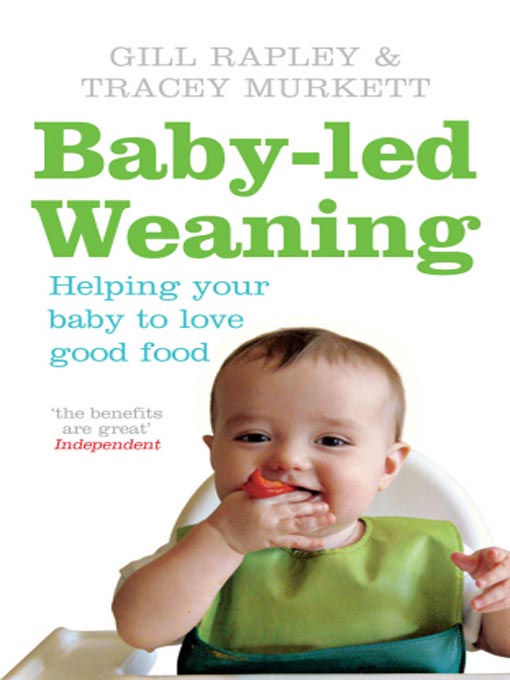 These are some of our favorites.
These are some of our favorites.
- Roasted sweet potato wedges
- Roasted apple wedges, skin on to help them hold together
- Roasted or steamed broccoli florets (big enough for baby to hold)
- Melon slices
- Thick mango slice
- Banana with some of the peel still on
- Toast sticks with mashed avocado
- Avocado spears (make sure the avocado is ripe and soft)
- Lamb or beef, on the bone or a large piece for baby to suck on
- Dark meat chicken, on the bone or a large piece for baby to suck on.
TIP: The foods should generally be soft enough to squish between your fingers with the exception of the large pieces of meat. If baby gnaws a piece down into a smaller piece, replace it with a larger one to avoid her putting a chunk of food into her mouth.
Baby Led Weaning Banana
To serve a banana to a baby, wash it well, then slice it in half. Cut off an inch or two of the peel, but leave the rest of the peel on so it’s not slippery for baby to hold. They’ll suck on the top part like a little popsicle! You can also help them hold the banana if needed.
They’ll suck on the top part like a little popsicle! You can also help them hold the banana if needed.
Foods to Avoid Serving While Doing BLW
You want any foods you offer to a baby while doing baby led weaning to be soft enough to squish between your fingers and safe for them to eat and digest. Plan to avoid:
- Anything hard, sticky, or crunchy (like raw apple or carrot, whole nuts, crackers, or a big spoonful or nut butter)
- Added salt
- Cow’s milk (which is difficult for kids under 1 to digest; plain yogurt is fine though)
- Added sugar (they simply don’t need it)
- Honey (to avoid a risk of botulism)
- Super slippery foods that would be hard for baby to hold (which can be frustrating)
TIP: Always sit with your baby and watch them try to eat. They are your best guide for making adjustments to the foods you serve.
Baby Led Weaning and Choking
There are many parents who dislike this method of feeding because it often sounds like a baby is choking.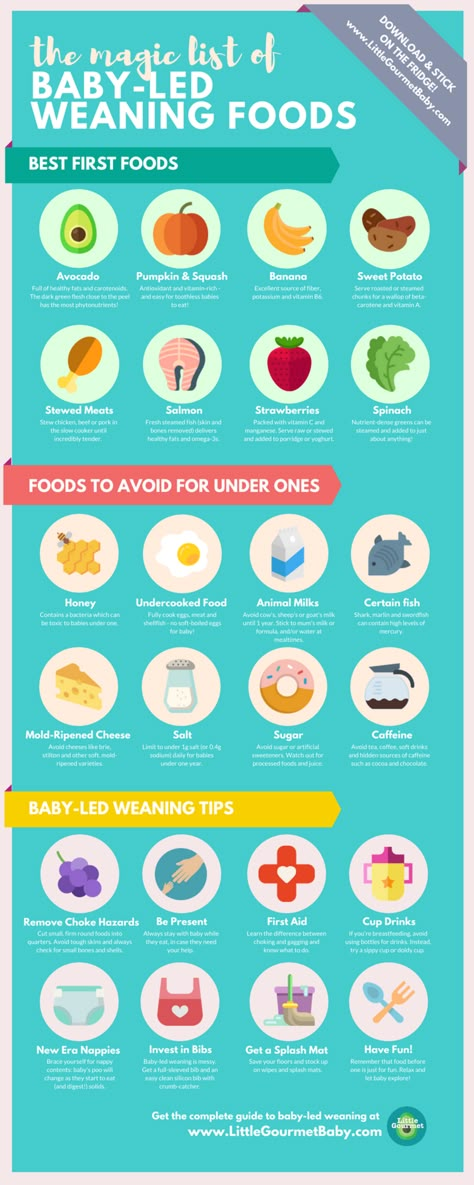 And while there are surely some incidences of choking, what’s more likely is that a baby will occasionally gag on a piece of food that gets into their mouth that they weren’t expecting.
And while there are surely some incidences of choking, what’s more likely is that a baby will occasionally gag on a piece of food that gets into their mouth that they weren’t expecting.
But remember: Gagging is a sign that baby is doing what she needs to in order to move the food around in their mouth as they learn to eat. It usually sounds more dangerous than it actually is.
TIP: If the sound of gagging really freaks you out, you’re not alone. Consider offering more preloaded spoons with purees to start your journey more slowly.
How to Cut Foods for BLW
You generally want the food to be big enough that it would be difficult for baby to put the entire thing into their mouths. Here are some specifics:
- Foods that are roughly the size of a finger, so about a 4-inch stick.
- Foods that are easy for the baby to pick up—they can’t pick up small pieces until closer to 9 months when they develop the ability to use their fingers in what’s known as a “pincer grasp”.

- Foods that aren’t too slippery—so you can wash and leave some of the peel on fresh foods like bananas, avocado, kiwi, and mango.
TIP: You can also go even bigger if you’re worried about size. Think half of a slice of bread or a big chunk of watermelon.
Will my baby actually eat much food with BLW?
Probably not at first. There will likely be more tasting of the food than eating of it and that is totally fine. They will still rely on breast milk or formula at this age for their main nutrition, so don’t expect them to suddenly start eating full meals. (They’ll get there in a few months, but it takes time!)
Do babies need teeth for baby led weaning?
No! Gums are super strong and front teeth aren’t used for chewing—that happens when the back molars come in. Teeth really have nothing to do with whether or not a baby can eat solids.
TIP: Learn more about what to expect from teething here.
Can you mix baby led weaning and purees?
Absolutely! I think it’s a great idea to mix the two methods simply because it gives you many more options for foods and allows the baby to experience more textures. I recommend allowing babies to feed themselves preloaded spoons—so you put the puree on a spoon, then hand it to them to actually put the spoon into their mouth—so they still have control over what goes into their mouths.
I recommend allowing babies to feed themselves preloaded spoons—so you put the puree on a spoon, then hand it to them to actually put the spoon into their mouth—so they still have control over what goes into their mouths.
TIP: Feeding some purees is also helpful if you’ll be sending food with a baby to daycare since the care provider may not have experience with blw.
Best First Foods for Baby: Purees
Here are some of our favorite purees to start offering baby when they’re ready to start solids. Remember: There’s no evidence that says that you need to start with vegetables versus fruits, so go with something that tastes good to you. Start with single foods pureed smooth and offer just a little at a time on a spoon.
- Mashed roasted sweet potato puree
- Mashed avocado puree
- Mashed banana puree
- Butternut squash puree
- Applesauce, unsweetened
- Mashed pea puree
- Oatmeal baby cereal (with added iron)
TIP: One of my favorite baby food companies is Amara Organic Baby Food, a company using a nutrient protection technology that makes organic purees just as good as homemade.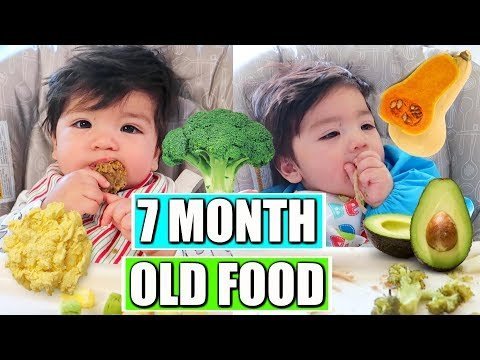 I love how easy they are to use when I need a shortcut and that they have fun baby-led weaning recipes on the side of every box! (paid affiliate link)
I love how easy they are to use when I need a shortcut and that they have fun baby-led weaning recipes on the side of every box! (paid affiliate link)
How do I know when baby has had enough?
If your baby is eating and then starts to turn her head away or just refuses to open her mouth, she’s done! Babies may also start to fuss if they’ve had enough. Learning this new skill takes time and babies can become tired fairly quickly into the process, so don’t expect them to always eat very much or to last very long at the table. This stage is about exploration!
Baby with preloaded spoon of yogurtHow to Let Baby Self Feed Purees
I love offering purees on a preloaded spoon. To do this, the parent, puts some of the food on the spoon and hands it to baby. Then baby can bring the food to their mouth all by themselves. This gives you some of the same advantages of baby led weaning, but can be more comfortable for many parents.
Remember, you can mix what you offer, going back and forth between purees and blw finger foods, so you can offer the same food two different ways to let baby explore.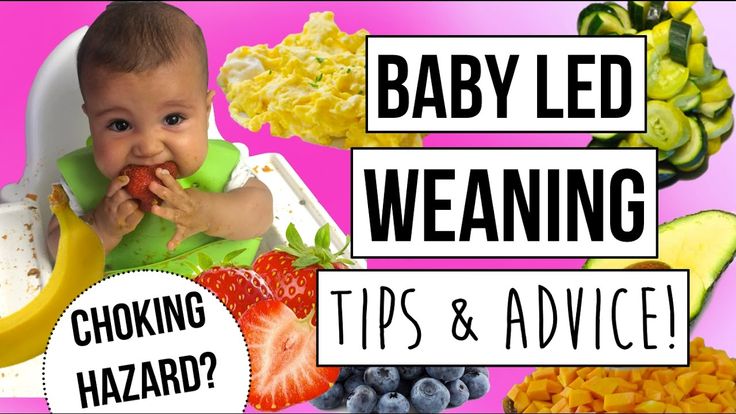 The main goal is to avoid forcing baby to take more bites than they want to, which can sometimes happen with purees.
The main goal is to avoid forcing baby to take more bites than they want to, which can sometimes happen with purees.
When to Introduce Potentially Allergenic Foods
In recent years, guidelines have been updated on when to introduce potential allergens including peanuts, eggs, and shellfish, so unless you have a family history of a food allergy, you can go ahead and introduce them soon after baby starts eating solids. In fact, research is showing that introducing these foods early can actually protect baby from developing an allergy. Talk to your pediatrician if you have concerns.
TIP: Thin unsweetened peanut butter with water to form a very thin Peanut Butter Puree until it’s about the consistency of regular yogurt and offer a very small amount on a spoon or spread on a toast stick.
What does a baby led weaning meal look like for months 7 and 8?
Until a baby is closer to 9 months and is able to pick up smaller pieces of foods, but after they have gotten the hang of one food at a time, I try to offer 1-2 foods they can feed themselves and one puree. This offers them a chance to ingest more via the puree but still feed themselves a range of textures. You can do more or less food following the lead of the child.
This offers them a chance to ingest more via the puree but still feed themselves a range of textures. You can do more or less food following the lead of the child.
TIP: My Baby Food Chart has loads of with ideas for blw foods and purees by month.
Recipes for Every Stage of Starting Solids
If you’re ready to start solids with baby, or you’re just curious what it looks like to do a mix of baby led weaning and purees, check out my Yummy Baby Food cookbook. It goes stage by stage with specific foods to start in each, with simple recipes and easy feeding tips.
Listen to a recent podcast episode to hear about some of the basics of BLW with our guest Megan McNamee, MPH, RDN, CLT, and a Registered Dietitian Nutritionist specializing in pediatric nutrition who runs Feeding Littles.
I’d love to hear any questions you have with BLW or if your baby had a first food that I didn’t list here. Please comment below to share your experience!
Prep Time 5 minutes
Total Time 5 minutes
Author Amy Palanjian
Cuisine American
Course Dinner
Calories 28kcal
Servings 1
Banana
- ▢ 1 small ripe banana with peel on
Roasted Sweet Potato
- ▢ 1 small sweet potato + 1 teaspoon olive oil
Roasted Apple
- ▢ 1 small apple + 1 teaspoon butter or neutral oil
Roasted Broccoli
- ▢ 1 cup broccoli florets + 1 teaspoon olive oil
Sauteed Green Beans
- ▢ 4 green beans 1 teaspoon olive oil
Melon
- ▢ 1 small piece watermelon or cantaloupe
Avocado Toast
- ▢ 1 slice whole grain bread
- ▢ 1 tbsp ripe avocado
Avocado Spear
- ▢ ⅛ ripe avocado
Lamb or Beef
- ▢ 1 lamb chop, roast, or steak
Pan-Seared Chicken Thighs
- ▢ 1 chicken thigh
- ▢ 1 tsp olive oil
- ▢ 1 garlic clove, optional
Banana with some of the peel still on
Cut a banana in half.
 Use a knife to gently cut around the peel about 2 inches down, leaving some of the peel on so that the banana is easy for baby to hold and less slippery.
Use a knife to gently cut around the peel about 2 inches down, leaving some of the peel on so that the banana is easy for baby to hold and less slippery.
Roasted Sweet Potato Wedges
Preheat oven to 400 degrees and line a rimmed baking sheet with foil. Wash and dry the sweet potato. (You don't need to peel it.) Cut in half, then cut lengthwise into strips. Cut each strip in half again until each is about 1/2-inch thick. Slice in half horizontally if the sweet potato is very long. (Each strip should be about the size of your finger.) Place into a bowl and toss with the olive oil. Spread onto prepared baking sheet and roast for 22-25 minutes or until soft. Let cool slightly and serve.
Roasted Apple Wedges
Roasted Broccoli Florets
Preheat the oven to 400 degrees F. Place the broccoli onto a rimmed baking sheet and toss with the olive oil, coating and mixing well until all of the florets are a little shiny and coated with oil.
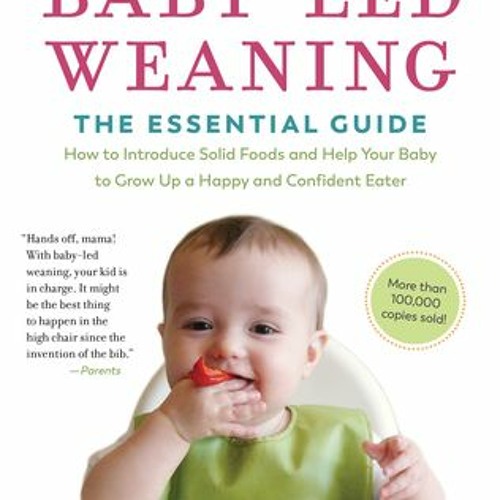 Roast for 15-18 minutes or until tender. Let cool slightly and serve.
Roast for 15-18 minutes or until tender. Let cool slightly and serve.
Sauteed Green Beans
Warm the oil in a large skillet over medium heat. Add the green beans and stir. Cover and cook for about 8 minutes. Remove cover and taste one to see if it’s soft enough. Cook for an additional minute or two as needed.
Melon slices
Avocado Toast
Avocado Spears
(Make sure the avocado is ripe and soft): Cut a thick strip of avocado and offer to baby. You can leave the peel on if that makes it easier for baby to hold (just wash it first).
Lamb or Beef
Prepare a roast, steak, or chop without salt and with butter or olive oil until cooked medium well. Offer a thick slice at least the size of your finger or a drumstick.
Pan-Seared Chicken Thighs
Warm 1 tablespoon olive oil or butter in a large skillet over medium heat. Add the chicken thigh and top with a few slices of fresh garlic, if desired.
 Cover and cook for 4-5 minutes. Remove cover. Flip over and cook for an additional 4-5 minutes uncovered or until a meat thermometer registers 165 degrees F.
Cover and cook for 4-5 minutes. Remove cover. Flip over and cook for an additional 4-5 minutes uncovered or until a meat thermometer registers 165 degrees F.
- Add spices like garlic powder, cinnamon, cumin, oregano, or any other non-spicy flavor you like to make these more interesting.
- Offer just one piece at a time when starting out.
- If baby gnaws a piece down into a smaller piece, replace it with a larger one to avoid her putting a chunk of food into her mouth.
- Store any leftovers in an airtight container in the fridge for 3-5 days. Reheat briefly if needed.
- Remember that it's normal for babies to take time to actually ingest the food. Part of the process is exploring all of the senses related to the experience of eating.
Calories: 28kcal, Carbohydrates: 2g, Protein: 1g, Fat: 2g, Saturated Fat: 1g, Polyunsaturated Fat: 1g, Monounsaturated Fat: 2g, Sodium: 6mg, Potassium: 75mg, Fiber: 1g, Sugar: 1g, Vitamin A: 23IU, Vitamin C: 2mg, Calcium: 2mg, Iron: 1mg
Tried this recipe?Rate in the comments and tag @yummytoddlerfood on IG!
Printable Baby Food Chart: BLW, Purees, Finger Foods
Make feeding your baby easier with this free, downloadable baby food chart.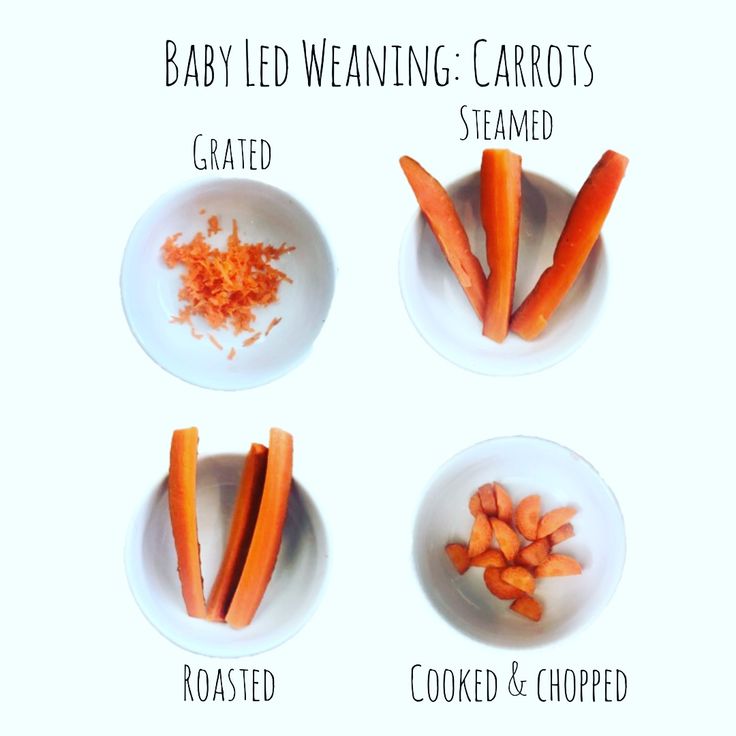 It has straight forward ideas for what to feed baby from when they start solids on up to one year—including purees, baby-led weaning style foods, finger foods, and more.
It has straight forward ideas for what to feed baby from when they start solids on up to one year—including purees, baby-led weaning style foods, finger foods, and more.
Baby Food Chart
Starting solids with a baby can be so fun and often a little challenging—but this baby food chart will help. I’ve compiled my best ideas for which foods to serve based on age and development of the baby to make it easy for you to make decisions in the kitchen.
This infant feeding chart is meant to help remind you of options you have at each age. It is not meant to add any pressure or function as a checklist of foods you have to serve (unless you want to do that!).
TIP: Download your free printable baby food chart here.
What baby foods should you start with?
Whether you start with purees or baby led weaning, starting with flavorful and nutrient-dense foods is a simple way to think about introducing foods to a baby. I love simple foods like roasted sweet potato, avocado, banana, and apple puree as first foods for a baby.
Remember that a first food is just that—a first food. It is not going to be the sole thing that determines how your child likes all foods. It can be sweet or savory, or from a variety of food groups. I would do your best to make sure that the food is easy to eat, has some flavor, and that the environment in which you offer it is free from pressure and, maybe even joyful!
What age should baby start eating foods?
The American Academy of Pediatrics recommends waiting to start solids until a baby is 6 months, and to go with wide variety of foods, introduced one at a time. But many pediatricians still say it’s okay to start rice cereal at 4 months.
If your pediatrician recommends this at the 4 month check up, ask their thoughts on the recommendation from the AAP.
TIP: Learn more about starting solids here.
How much food should I feed my baby?
The best way to know the right amount of food to give to a baby is to follow their lead. It should be very clear when a baby is done eating—they will close their mouth, turn their head, and generally make it very hard to feed them. (They may also play with their food, which is a fine way for them to interact with the foods at this early stage.)
It should be very clear when a baby is done eating—they will close their mouth, turn their head, and generally make it very hard to feed them. (They may also play with their food, which is a fine way for them to interact with the foods at this early stage.)
It’s okay if baby eats very little to start. It’s also okay if they surprise you by being very interested in food!
TIP: Download your free printable baby food chart here.
6 Month Baby Food Chart for Purees
If you’re ready to start solids with a baby, here are some foods you may want to start with. This list is perhaps more broad than you expect, but more recent research shows that it’s a good idea to introduce potential allergenic foods earlier and that lots of flavor is a great way to set baby up for eating a range of foods as they grow.
Don’t feel like you need to serve all of these foods (you 100% don’t!), but it should give you a range of ideas to consider based on season, availability, and your own preference.
- Almond butter puree
- Apple Puree
- Avocado puree
- Banana puree
- Baby oatmeal
- Bean puree
- Butternut squash puree
- Egg yolk, hard cooked mashed with water
- Green bean puree
- Melon puree
- Pea puree
- Peach puree
- Peanut Butter Puree
- Pear puree
- Pumpkin puree
- Sweet potato puree
- Whole milk plain yogurt
- Single ingredient baby food
TIP: Find more in depth details on how to know if your baby is ready to start solids here.
6 Month Baby Food Chart for Baby Led Weaning
If you decide to use the baby led weaning method of feeding, you’ll want to cut these foods into the shape of a finger or larger. The foods should also be soft and easily squishable between two fingers—like the texture of a roasted sweet potato wedge or ripe avocado.
You don’t need to feel like you have to serve all of these foods by any means, but it should give you a range of ideas.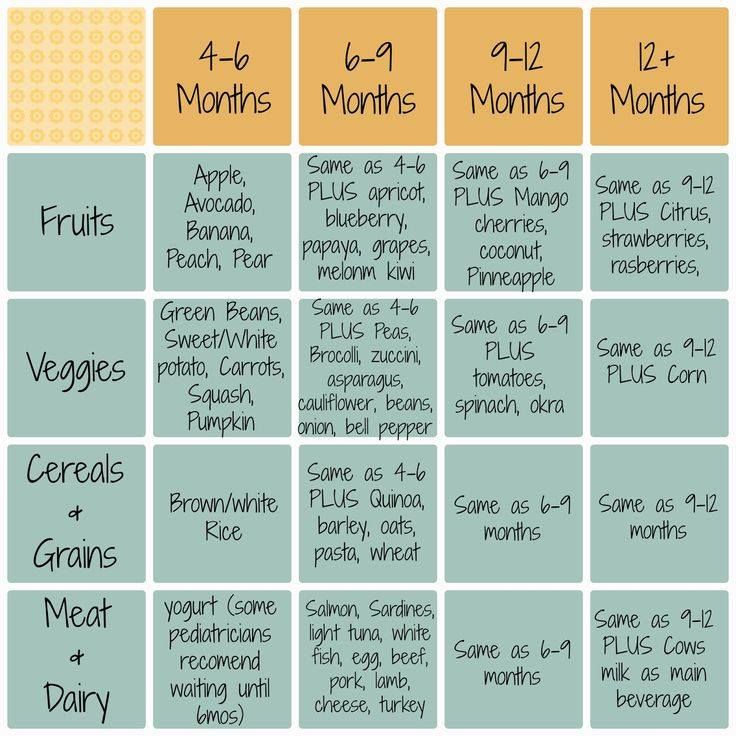
- Apple, roasted wedge
- Avocado spears
- Banana
- Beef, ground (large piece)
- Beef hamburger patty (sliced)
- Beet, steamed or roasted
- Broccoli florets, roasted/steamed
- Cauliflower florets, roasted/steamed
- Chicken, dark meat shredded
- Cucumber
- Green bean
- Egg, hard cooked
- Egg in omelet, sliced
- Figs, halved
- Lamb
- Mango slice
- Meatball
- Melon slices
- Peach, very ripe slice
- Pear, very ripe slice
- Potato, roasted wedges
- Steak slice
- Sweet potato, roasted wedges
- Toast with mashed avocado
- Toast with mashed sweet potato
- Toast with light smear of peanut butter
- Toast with mashed hard cooked egg
- Watermelon slice
- WiId salmon
TIP: Find my Ultimate Guide to Baby Led Weaning here.
7 Month Baby Food Chart
With a 7 month old baby, you can add in a few more foods including those with more acid like citrus. Continue serving the foods on the 6th month list, or introduce ones that you didn’t get to in that first month.
Continue serving the foods on the 6th month list, or introduce ones that you didn’t get to in that first month.
- Baby rice crackers
- Bean puree
- Beet puree
- Brussels Sprouts, pureed (or large piece for BLW)
- Guacamole
- Kiwi puree (or large piece for BLW)
- Hummus
- Mango Puree
- Mixed ingredient baby foods
- Orange segment for BLW
- Pineapple puree (or large piece for BLW)
- Prune puree
- Strawberry puree (or large strawberry for BLW)
- Spinach puree
- Smoothies (simple)
- Tomato sauce
- Tomato sauce with ground meat
TIP: Try my 10 easy No Cook Baby Foods.
9 Month Baby Food Chart
As a baby nears the 9 and 10 month mark, they will begin to be able to pick up small, pea-size pieces of foods with their fingers. This development of the “pincer grasp” means they are ready to start sampling table foods.
A good rule of thumb is to cut foods to about the size of a pea and to serve them very soft and easily squishable between your fingers.
Bread-like textures in foods like pancakes and muffins may be difficult for your child, so you may want to moisten them with water, applesauce, yogurt, breastmilk, or formula.
Remember that babies learn to eat a variety of paces, so follow the lead of your baby and avoid pressuring them to eat foods or amounts of foods that they aren’t ready for. If a baby turns their head away, closes their mouth, shakes their head, or cries, they are done with food and it’s okay to end the meal.
Continue serving foods from the previous months. And try adding:
- Banana, diced and mashed slightly as needed
- Barley, cooked until very soft
- Beans, slightly mashed
- Beef, ground
- Blueberries, diced
- Cheese, shredded
- Chex cereal
- Chia seed in smoothies, yogurt or oatmeal
- Chicken, ground
- Chicken, shredded and chopped into small pieces
- Clementines, diced (you may want to remove the slightly tough membrane)
- Cottage cheese
- Corn
- Flaxseed in smoothies, yogurt or oatmeal
- Goat cheese, soft crumbles
- Grapes, diced (never whole)
- Kefir, plain
- Meatball, diced
- Muffins, diced (moistened if needed)
- Millet
- O cereal
- Oatmeal
- Overnight oats
- Pasta
- Peas
- Potatoes, roasted or mashed
- Puffs
- Raspberries, diced
- Pancake, diced (moistened as needed with applesauce)
- Quinoa
- Rice
- Salmon, small pieces
- Tofu, diced
- Tomatoes, fresh
- Tilapia, small pieces
- Turkey, ground
TIP: Find my best Early Finger Foods, which will cover this stage and early toddlerhood.
Best First Finger Foods for Baby
I put together my go-to first finger foods for babies, which may help you narrow down which foods to start with. Each of these is a nutritious whole food that’s soft and easy for baby to eat. It’s helpful that many of these foods are ones that us grownups like too, so it should make meal planning and prep for the little ones easier on you!
Printable Baby Food Chart
Grab your free copy of my downloadable Baby Food Chart with access to my entire Resource Library of Printable charts by signing up for my newsletter.
You May Also Like
- ABC Baby Muffins
- Master List of Baby Snacks
- Extra-Veggie Baby Soup
- Sweet Potato Teething Biscuits
- Master List of Baby Food Recipes
I’d love to hear your feedback on this chart, so please comment below! I always love to hear from you guys.
This post was first published Jan 2019.
Complementary foods - what is it and how is it eaten?
home
Articles
Nutrition
Loginevskaya Yana Vladimirovna Pediatrician
24. 04.2019
04.2019
What is weaning and when should we start it? These and many other issues related to child nutrition torment young parents. In the era of the Internet and easy access to information, this information can sometimes become too much.
Let's find out what complementary foods are
Complementary foods is the introduction into the diet of a healthy child at a certain age of any food products, home or industrially prepared, that supplement breast milk or food that imitates it, and contribute to the gradual transfer of the child to the general table. As a rule, complementary foods are thicker in consistency than the child's previous food. If the child has any health problems, the introduction of complementary foods may have its own characteristics.
The purpose of complementary foods in the first year of life is to introduce the baby to foods other than breast milk/or formula. Timely teach to swallow and chew solid food. And also to avoid deficiency of energy and micronutrients, and vitamins.
And also to avoid deficiency of energy and micronutrients, and vitamins.
In the literature and other sources, you can find such names as "pediatric" and "pedagogical" complementary foods?
Pediatric Complementary Food , as its name implies, is a classic complementary feeding regimen recommended by the pediatrician at the appointment. Schemes in which there is a gradual replacement of breast milk / formula feeding with cereals, fruit / vegetable purees and other types of products.
Pedagogical complementary food - "Pedagogical" means that first of all the child is taught - they are taught to eat, the correct behavior at the table, they teach that food is joy and pleasure, they show new tastes. The essence of pedagogical complementary foods is that the child's nutrition begins with "microdoses" (grains of food), which the child receives from his mother's plate, nothing is pureed and blended, and does not even warm up. Nutrition of the child - together with the family, how much he will eat, he will eat so much. Nothing is specially prepared, the family is invited to switch to a healthy diet. The disadvantage of this type of complementary foods is that the child, starting with “micro doses”, does not adequately increase the volume of complementary foods, which can lead to malnutrition of the child at an older age.
Nothing is specially prepared, the family is invited to switch to a healthy diet. The disadvantage of this type of complementary foods is that the child, starting with “micro doses”, does not adequately increase the volume of complementary foods, which can lead to malnutrition of the child at an older age.
In my article, I will rely on modern research and recommendations primarily from the WHO (World Health Organization) and the National Program for Optimizing Feeding in Children in the First Year of Life in the Russian Federation.
What requirements must be met in relation to complementary foods:
- Complementary foods must be timely, introduced at the moment when the child's energy and nutrient requirements exceed what can be provided through breastfeeding (or formula).
- Complementary foods should be adequate, that is, with enough energy, protein and micronutrients to meet the nutritional needs of a growing child.
- Safe - Store or prepare hygienically and feed with clean hands using clean utensils - spoons, plates, not bottles or teats.

- Properly Administered - The child is fed appropriately for hunger cues, and feeding frequency and feeding methods should be appropriate for the child's age.
When do we introduce complementary foods
The optimal age for the introduction of complementary foods is 6 months.
If the child is premature, then the timing of the introduction of complementary foods is delayed by as much as this child was born earlier (that is, if the child was born not at 40 weeks, but, for example, at 36, we have the right to postpone the introduction of complementary foods for 4 weeks, but if we see that at 6 months the child is already quite ready for the introduction of complementary foods, then you can start as early as 6 months). It is advisable to postpone the introduction of complementary foods for no more than 2 months. Try to start the introduction of complementary foods no later than 8 months of the child.
Up to 6 months, breastfeeding fully covers the energy needs of the child. Around 6 months of age, a baby's energy requirements increase dramatically, so it is necessary to add something to his diet in addition to liquid food. Breast milk in terms of its energy value contains 67-68 kcal / 100g, the mixture has approximately the same figures. Breast milk remains a valuable energy product for children not only in the first year of life, but also after a year. It should be taken into account that the volume of the baby's stomach by 6 months is about 200 ml, so the food introduced to the baby should be thicker than formula or breast milk, otherwise we still will not be able to meet the energy needs of the body. The optimal calorie content of complementary foods should be at least 100 kcal / 100 g.
Around 6 months of age, a baby's energy requirements increase dramatically, so it is necessary to add something to his diet in addition to liquid food. Breast milk in terms of its energy value contains 67-68 kcal / 100g, the mixture has approximately the same figures. Breast milk remains a valuable energy product for children not only in the first year of life, but also after a year. It should be taken into account that the volume of the baby's stomach by 6 months is about 200 ml, so the food introduced to the baby should be thicker than formula or breast milk, otherwise we still will not be able to meet the energy needs of the body. The optimal calorie content of complementary foods should be at least 100 kcal / 100 g.
Liquid food and liquid quickly fill the stomach. To fill the energy deficit, it is necessary to introduce foods with a higher energy value than breast milk or formula.
WHO ways to increase calories:
-
cook with less liquid
-
Replace part of the water for cooking with breast milk or a mixture (it must be borne in mind that breast milk contains enzymes (lipase) - which begin the digestion and breakdown of food even before it enters the child's body, so instant cereals, when breast milk is added, immediately become liquid, but their energy value is not lost.

What do we focus on when introducing complementary foods:
The main criterion is the readiness of the child to introduce complementary foods - the child shows interest in food, the so-called food interest - he is interested in what his mother eats, actively reaches for food from his parents' plate, wants to taste it.
Indirect criteria
- Child's age about 6 months
- Decreased solid food ejection reflex (active interest in food is never shown until ejection reflex fades)
- Doubling birth weight (optional item, some babies double their weight before 6 months of age)
- Child can sit with support
- The first teeth appear in a child (again, not always)
Principles of maintaining interest in food
- Parents should remember that in order to form the main criterion for readiness for complementary foods, the child must see how his family eats. The formation of eating habits comes from the family and the immediate environment of the child.
 If, before 6 months, the child has never seen how mom or dad eats, how they eat at the table and what they eat, he may not have a food interest by 6 months. Food interest begins to gradually form as a skill of tracking the actions of an adult from 3 months of age. That is, somewhere from the age of 3 months the child, if you take him with you to the kitchen (dining room), the child begins to observe the process of eating, and gradually this interest - from the interest of "observation" goes to the "desire" to try just like mom or dad.
If, before 6 months, the child has never seen how mom or dad eats, how they eat at the table and what they eat, he may not have a food interest by 6 months. Food interest begins to gradually form as a skill of tracking the actions of an adult from 3 months of age. That is, somewhere from the age of 3 months the child, if you take him with you to the kitchen (dining room), the child begins to observe the process of eating, and gradually this interest - from the interest of "observation" goes to the "desire" to try just like mom or dad. - It is advisable not to feed the baby separately and try to eat with the baby what the baby eats. If you are feeding your child with industrial food (ready-made mashed potatoes in a jar), then try this food with your child. Try to bring the canned food as close as possible to the general view on the table - transfer the puree from the can to a plate, give a spoon. At the age of 8-10 months, the child learns to eat with his hands, so at this age it is advisable that the child has small pieces of food on the plate that he already eats - these can be pieces of boiled potatoes, broccoli, cauliflower, pieces of apple, banana.
 The pieces should be small, 1 x 1 cm, so that the child can grab them with his fingers. In parallel, the mother can supplement the child from the plate with the main food. The child learns to cope with more solid food, learns to chew, swallow. The sooner the skill of swallowing more solid food is worked out, the easier it is for parents in the future. At the age of 10-12 months, the child's fine motor skills are already improving, he is learning to eat with a spoon (be patient, different children do it in different ways and at different speeds)
The pieces should be small, 1 x 1 cm, so that the child can grab them with his fingers. In parallel, the mother can supplement the child from the plate with the main food. The child learns to cope with more solid food, learns to chew, swallow. The sooner the skill of swallowing more solid food is worked out, the easier it is for parents in the future. At the age of 10-12 months, the child's fine motor skills are already improving, he is learning to eat with a spoon (be patient, different children do it in different ways and at different speeds) - Be mindful of the child's physical condition - do not introduce new foods when the child is unwell or tired or teething or has undergone some medical procedure such as a vaccination
- Offer small portions. Some children undereat food because they are initially intimidated by the portion size. Do not insist that the child finishes the portion. Let him ask for another after some time
- Try to keep the area around the child clean! This initially teaches the child to cleanliness at the table and to a neat diet.
 Some children are very sensitive to external stimuli - dirty hands, face, clothes can cause them severe discomfort
Some children are very sensitive to external stimuli - dirty hands, face, clothes can cause them severe discomfort - Help the child if you see that the child is "interested" in food, but tired of fighting with it.
- No games, entertainment or persuasion while eating - in this way you replace food interest with interest in the game. The child will not be able to learn to adequately assess their desires in food. Don't turn food into a show.
Complementary feeding rules:
-
any new product is introduced only to a healthy child. A breastfed baby is given complementary foods up to the breast.
-
the introduction of new foods should not coincide with vaccinations, teething, vacations, or other stress for the child (when stressed, the child may refuse the proposed new product).
-
any new product is introduced in the morning (so parents have time to observe the child, look at his reaction, notice allergic manifestations) If the child has a reaction to a new product, then it is better to write it down, and try to introduce the product again after 5- 10 days.
 Because this reaction may not be related to the product, but caused by other factors. If the negative reaction is repeated, then the introduction of this product is postponed for 3 months.
Because this reaction may not be related to the product, but caused by other factors. If the negative reaction is repeated, then the introduction of this product is postponed for 3 months. -
it is advisable to introduce no more than one new product per day.
-
to get acquainted with the product, the child sometimes needs 10-15 sentences in order for him to start eating it. The reaction of the child in the form of wrinkling, pushing food, curvature of the face does not indicate that the child did not like the food, but only that the new taste is very bright for him and causes a large number of emotions. For children, even neutral tastes can seem very rich, due to the higher sensitivity of the receptors. Therefore, when introductory feeding, it is not recommended to use spices and salt in the preparation of food for the child.
Basic complementary foods
For the first feeding, there are three main types of products: cereals, vegetables and meat.
-
Cereals - Dairy-free cereals are used to start complementary foods. Rice, corn, buckwheat are the first to be introduced - these can be special “instant” baby cereals (we carefully study the composition, make sure that there are no additives, sweeteners, flavor enhancers, vitamins), instant cereals are well suited to start complementary foods, at 6-7 months, in the future you can switch to ordinary "adult" cereals, you can grind ready-made buckwheat or rice with a blender or fork; instant porridges in the form of flakes are also good. Then the rest of the cereals (oatmeal, rye, millet) are introduced. With an allergic burden in the family, the introduction of milk porridges earlier than 12 months is not recommended.
-
Vegetables – first add green/white vegetables (zucchini, cucumber, broccoli, kohlrabi, cabbage and cauliflower), then legumes, colored vegetables (carrots, pumpkin, beets, tomato)
-
Meat - the beginning of feeding with the most easily digestible and hypoallergenic meats - rabbit, turkey, then veal, beef, pork, lamb.
 Children with an allergy to cow's milk protein start complementary foods first with pork, then they introduce beef. Children with allergies are also trying to limit the introduction of chicken into the diet, as it is a highly allergenic product. Lamb is introduced to children no earlier than 10 months. Poultry meat - duck, goose - contains refractory fats and is not recommended for introduction into the diet of babies under 3 years of age.
Children with an allergy to cow's milk protein start complementary foods first with pork, then they introduce beef. Children with allergies are also trying to limit the introduction of chicken into the diet, as it is a highly allergenic product. Lamb is introduced to children no earlier than 10 months. Poultry meat - duck, goose - contains refractory fats and is not recommended for introduction into the diet of babies under 3 years of age. -
Fruit and dairy products are not considered essential complementary foods. Can be given for table variety. If the mother wants to give fruits, berries and juices to the child, it is better to use them as a flavoring additive to the main complementary foods or even postpone the introduction to an older age. In children with an allergic tendency, it is recommended not to introduce dairy products up to a year. You have to be careful with berries and fruits. It is best to start complementary foods with seasonal fruits and berries; the least and least likely to cause allergies are currants, blueberries, apples, pears, plums.
 Allergic reactions often occur on strawberries, bananas, citrus fruits.
Allergic reactions often occur on strawberries, bananas, citrus fruits. -
Fish and seafood. Not a staple complementary food. But fish, like meat, is a source of protein, rich in polyunsaturated fatty acids, as well as minerals and vitamins. It is recommended to introduce fish no earlier than 9-10 months. Again, if the child is allergic, it is advisable to refrain from introducing fish products up to 1 year. We begin to introduce complementary foods with low-fat white varieties of fish in the form of mashed potatoes - ice fish, hake, cod, haddock, pollock, navaga, pike perch, sea bass, dorado.
-
Egg . A product that is rich in many different micro and macro elements, vitamins. However, the egg has a very high allergenicity (included in the very big eight allergens). Considering that a quarter (5-6 g) or half (10-12 g) of the yolk, which are recommended to be administered, contains very few nutrients and energy, it is easier not to give this product than to risk allergic reactions in a child.

-
Whole nuts, peanuts should not be present in a child's diet until at least three years of age. In a number of countries, communities, families, where, for example, peanuts are common as a staple food, they can be used as an additive to complementary foods in a pureed state. Nuts are included in the big eight allergens and are not recommended for introduction into complementary foods for children with allergies up to three years of age.
-
Water . After the introduction of complementary foods, children can begin to offer water as a drink. First as an introduction, later as an additional source of fluid, while reducing the volume of breast milk (mixture). It should be pure water without any additives. It is important to remember that breastfed babies may go without water for quite a long time, due to the fact that they receive enough liquid from breast milk.
-
Tea . The World Health Organization does not recommend including tea in the diet of children under 2 years of age.
 Why? First of all, because of the tannins that are present in tea and can help reduce the absorption of trace elements, including iron and cause anemia. Tea also contains caffeine (it is found in a state associated with tannins and is more often called theine), which can cause excessive stimulating effect on the fragile nervous system of the child., It can also lead to increased heart rate, increased peristalsis of the stomach, increased body temperature - all this can adversely affect the general condition of the child.
Why? First of all, because of the tannins that are present in tea and can help reduce the absorption of trace elements, including iron and cause anemia. Tea also contains caffeine (it is found in a state associated with tannins and is more often called theine), which can cause excessive stimulating effect on the fragile nervous system of the child., It can also lead to increased heart rate, increased peristalsis of the stomach, increased body temperature - all this can adversely affect the general condition of the child. - Salt, sugar are not recommended for introduction into complementary foods under 1 year of age. Spices are introduced into the diet of a child after 2 years of age. These recommendations are based on the high sensitivity of the receptors in young children and the taste of tasteless dishes for children, even for us, is much brighter and richer.
WHAT to feed - the choice of parents. But it must be remembered that no single product (except for breast milk for children in the first months of life) can provide the body with all the nutrients, therefore, when compiling complementary foods, a variety of products should be combined.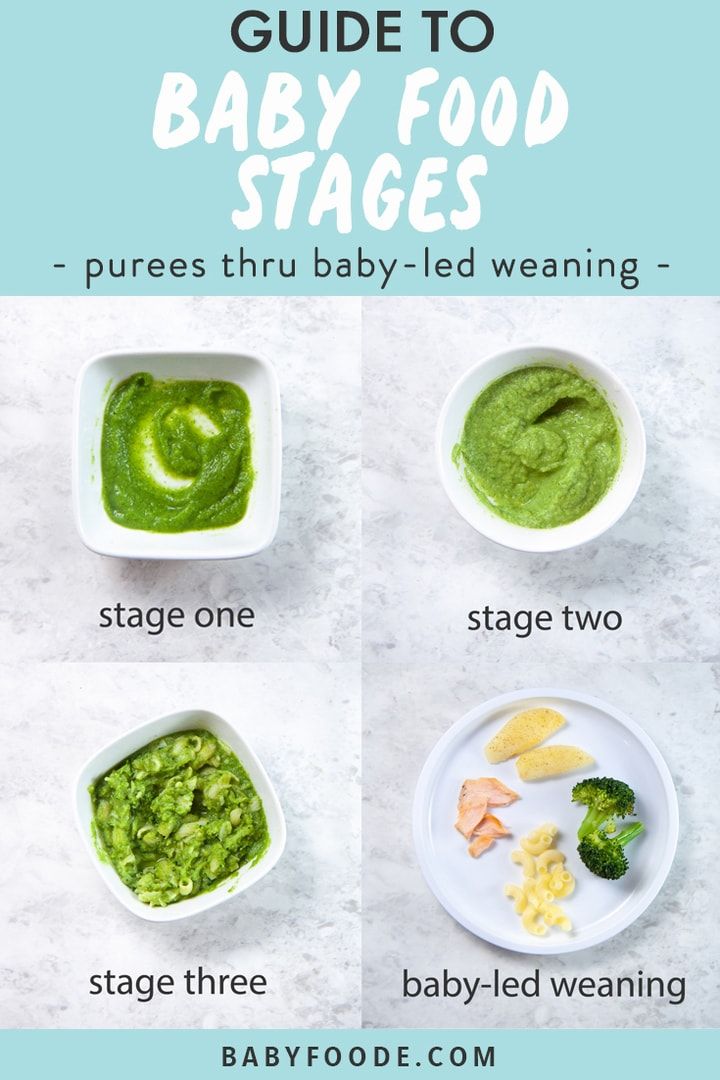 It is important that during the introduction of complementary foods, children receive pleasant taste sensations from the process of eating, this contributes to a better adaptation to new foods.
It is important that during the introduction of complementary foods, children receive pleasant taste sensations from the process of eating, this contributes to a better adaptation to new foods.
Don't be afraid to introduce solid foods to your babies. For advice on feeding children of different ages, you can always contact the specialists of our center.
Such a “fashionable” Omega-3
Breast milk: the gold standard of nutrition
Return to the list
how to introduce, start and monthly complementary foods
When to give complementary foods?
What should young parents remember?
4-6 months: time to explore new products
Features of introducing cereals
Features of introducing meat and fruit purees
What to give a seven-month-old baby?
What to give an eight month old baby?
Features of nutrition from 9 to 12 months
Rules for the introduction of juices
The main mistakes of parents
What do you need to know to make the right menu?
With the advent of a child, young parents face many difficult questions. The most relevant of these is the introduction of complementary foods. The baby is growing, and the usual formula or milk is no longer enough to meet the body's needs for minerals and vitamins. To avoid possible difficulties, parents should have an idea of how and when to introduce the first complementary foods and what products are suitable for this purpose.
The most relevant of these is the introduction of complementary foods. The baby is growing, and the usual formula or milk is no longer enough to meet the body's needs for minerals and vitamins. To avoid possible difficulties, parents should have an idea of how and when to introduce the first complementary foods and what products are suitable for this purpose.
When to give complementary foods?
If the first three months of life a child does not show much interest in the environment, then by four the picture changes dramatically. He becomes more active, recognizes familiar faces, smiles, tries to grab and examine objects that are in front of his eyes. By this age, breast milk is no longer enough to meet the body's need for nutrients. There is a need to think about the first complementary foods.
Pediatricians recommend doing this at 4-6 months of age. No need to rush to feed. The first three months of life, the child's digestive tract is still very weak and not ready to meet with "adult" products. Early feeding is fraught with problems with digestion and the development of allergic reactions. But by four months, the picture changes. Moreover, the baby's expulsion reflex disappears, he can swallow food that is thicker than breast milk.
Early feeding is fraught with problems with digestion and the development of allergic reactions. But by four months, the picture changes. Moreover, the baby's expulsion reflex disappears, he can swallow food that is thicker than breast milk.
Late feeding is also fraught with serious consequences. First, the child's body begins to experience a deficiency of vitamins and vital elements. This can lead to developmental delays. Secondly, such an approach will slow down the development of chewing skills and, possibly, provoke problems with speech in the future.
Therefore, feeding too early or too late brings many problems. The optimal period is the age of 4-6 months. However, before starting the introduction of "adult" food, you need to consult a pediatrician and focus on the individual characteristics of your baby's body.
What should new parents remember?
There are simple rules that allow you to make the first weaning without complications. Young parents should remember them:
- Assess the child's physical condition.
 He must be able to sit by himself or with support. Also, the baby should not push a spoonful of food out of his mouth. The child must have an interest in food.
He must be able to sit by himself or with support. Also, the baby should not push a spoonful of food out of his mouth. The child must have an interest in food. - Introduce new foods only during the day. It is best to do this in the morning. Thus, you can notice signs of allergy development in time.
- Give only simple foods. For the first time, mashed potatoes and cereals consisting of only one ingredient are suitable, for example, mashed broccoli or zucchini. There should be no other impurities.
- Start with the smallest portion. For the first time, a serving the size of half a teaspoon is enough. The child will be able to evaluate the taste of the new product, and you will be able to monitor its condition. The serving size should be increased gradually over the course of a week, bringing up to 30-40 grams.
It is very important that the child is completely healthy before starting complementary foods. You can not introduce the baby to new food if he has signs of illness, he has suffered serious stress or he has been vaccinated.
4-6 months: Time to introduce new foods
Once you've made sure your baby is ready to explore new foods, it's time to decide which product to use for that purpose. If the baby has problems with stool or excess weight, preference is given to vegetable puree. In all other cases, you can start with both vegetables and cereals. If in doubt, be sure to consult your pediatrician.
In order to form the correct eating habits in the baby, he is transferred to five meals a day. Night feedings should be gradually reduced to a minimum. However, do not forget that it is quite normal for a child under one year old to wake up at night. Also, you can not feed the baby through force. If you notice that he is already full, stop feeding, even if the portion was not completely eaten.
Important! Don't try to feed your baby a lot of puree before bed in the hope that he will sleep through the night. Thus, you can provoke problems with the gastrointestinal tract.
Once a complementary food has been chosen, start gradually introducing it into your baby's diet. For starters, half a teaspoon will be enough. During the week, give only the chosen dish, do not add anything new and carefully monitor the reaction of the child. If familiarity with the product was successful, you can proceed to the introduction of a new component. This is done in the same way.
For starters, half a teaspoon will be enough. During the week, give only the chosen dish, do not add anything new and carefully monitor the reaction of the child. If familiarity with the product was successful, you can proceed to the introduction of a new component. This is done in the same way.
If a child refuses to eat a new dish, it can be mixed with an already familiar one, gradually increasing the total serving size. With age, it will be possible to introduce new components faster, however, while the immune and digestive systems of the child are not strong enough, you should not rush. If you started with vegetable purees, then after the child's body adapts to them, you can start introducing cereals.
Some children absolutely refuse to try new foods. This usually applies to vegetable purees that have a neutral or specific taste. You don’t need to force the baby to eat by force, but you also don’t need to give up trying to “make friends” with a new dish. Gradually he will get used to the unfamiliar taste. In some cases, adaptation to a new dish can take 7-14 days.
In some cases, adaptation to a new dish can take 7-14 days.
Peculiarities of the introduction of cereals
You need to start introducing complementary foods with dairy-free gluten-free cereals. Suitable buckwheat, corn and rice. It is best to give industrial cereals enriched with iron and other vitamins. Homemade cereals are less nutritious. In addition, not knowing the technology of their preparation, you can harm the fragile stomach. It is worth diluting the finished product with breast milk or milk formula. Porridges diluted with water have much less nutritional value. If the baby does not have allergies, you can add a little butter to the porridge.
Peculiarities of introducing meat and fruit purees
Meat should be introduced not earlier than 6 months. For meat feeding, mashed rabbit or turkey is suitable. Meat contains a lot of iron, which is necessary for the children's body. By adding meat puree to vegetable puree, you greatly facilitate the process of assimilation of this element.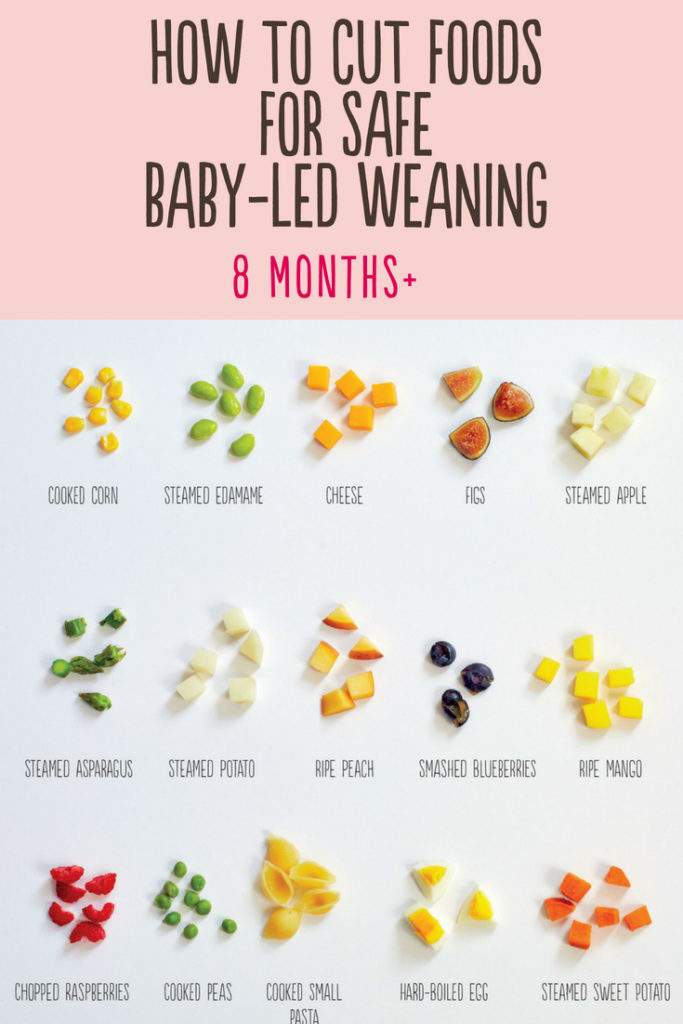
Fruit puree can be administered earlier, but pediatricians recommend that it be administered after meat puree. Fruits help to avoid problems with the stool, as well as increase appetite. Very often, fruit mixtures are added to cereals, which improves their palatability.
Important! If a child suffers from a food allergy, the rules for the introduction of complementary foods for him do not change. Starting acquaintance with new products should be with minimal portions. It is important to avoid highly allergenic foods, such as fish and cow's milk.
Foods with a high risk of developing allergies should only be introduced after the baby's body has fully adapted to low-allergenic foods. In some cases, you may need to consult an allergist. By 5 months, the volume of one serving averages 200 ml.
What to give a seven-month-old baby?
By this time, new foods are introduced into the diet. The baby has already grown enough, and the schedule of his nutrition should be drawn up similarly to the schedule of a grown child. In simple terms, he should have three main meals and two additional ones: breakfast, lunch, lunch, afternoon tea and dinner. However, one should not demand too much from a seven-month-old baby. He still wakes up at night, as for him this is a physiological norm.
In simple terms, he should have three main meals and two additional ones: breakfast, lunch, lunch, afternoon tea and dinner. However, one should not demand too much from a seven-month-old baby. He still wakes up at night, as for him this is a physiological norm.
At this age, children are given a taste of chicken egg yolk. To begin with, they give 1⁄4 pieces. If the child refuses to try an unfamiliar product, it is mixed with porridge or vegetable puree. When you include the yolk in the menu, you must carefully monitor the reaction of the child.
In addition to the yolk, at the age of 7 months you can start giving babies special baby cookies. No more than 1-2 pieces per day. It is important to understand that cookies are not a complete meal. This is a dessert that is given out for an afternoon snack or after a full meal.
If your child is not interested in new foods, try mixing them with familiar and tried ones. At one meal, the baby should eat about 150 grams of porridge or mashed potatoes. However, everything is individual here, you need to look at the physiological characteristics and needs of your child.
However, everything is individual here, you need to look at the physiological characteristics and needs of your child.
What to give an eight month old baby?
Eight-month-old babies become more active. They are curious about the world around them. At this age, they begin to take food with their hands, try to drink from a mug and show interest in cutlery. This kind of behavior should be encouraged in every possible way. By this time, children already know how to chew food, which means it's time to change the consistency of dishes. Food does not need to be pureed. Now fruits, vegetables and meat can be cut into pieces.
By the age of 8 months, the immune system and digestive system are already sufficiently adapted to the new food, and you can try to give your baby fish. Take low-fat varieties, for example, carp, pike perch, salmon, pollock, hake and cod are suitable for this purpose. You don't have to give too much. A couple of times a week is enough. Approximately 30 grams of fish is crushed and given in its pure form or mixed with vegetable puree.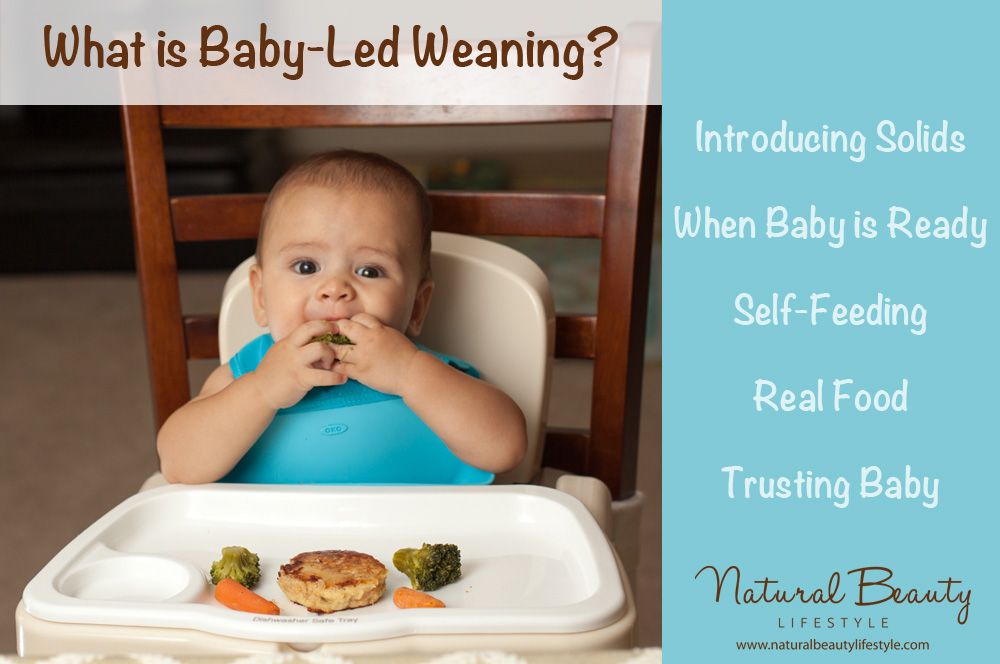 Remember that fish is one of the products that can provoke the development of allergies, which means that you need to carefully monitor the reaction of the child.
Remember that fish is one of the products that can provoke the development of allergies, which means that you need to carefully monitor the reaction of the child.
In addition to fish, cottage cheese appears on the menu at this age. It is rich in calcium and vitamins. Per day give no more than 50 grams of the product. Slowly introduce natural yoghurts, kefir and other fermented milk products. They are good for digestion. Samples begin with a couple of spoons, within 7 days the portion volume increases to 150-200 milliliters.
An 8 month old baby is growing fast and needs a lot of nutrients. His diet should be varied.
Features of nutrition from 9 to 12 months
The menu of a nine-month-old child is already quite diverse and includes all major food groups. However, parents still need to constantly expand his diet to introduce new foods. At 9 months, steamed cutlets can be given instead of mashed meats. Ready meals can be supplemented with herbs, which is also very useful.
It is at this age that many parents make the main mistake - they transplant their child to an adult table. As a result, the baby begins to develop problems with the stomach and intestines. If you want your child to be healthy and strong, you need to learn a number of simple rules:
- Never sweeten or add salt to ready meals, even if they taste bland to you.
- Take your time to introduce fruit juices. Postpone tasting them for up to a year. As for carbonated drinks, they should be completely excluded from the child's diet.
- Do not give your baby nuts, gummies, or other small, hard foods as they may choke on them.
- Never give whole apples and pears for the baby to “scratch” his teeth. He can bite off a piece of an apple and also choke.
- No need to replace sugar with honey. In some cases, natural honey does even more harm, causing serious health problems.
- Do not introduce semolina porridge into the diet for up to a year.
 It does not have many nutrients, but it is full of gluten.
It does not have many nutrients, but it is full of gluten.
Rules for introducing juices
By the age of one, you can introduce your child to juices. It is best to offer them as a dessert after the child has eaten the main course. Also, juice can be given for an afternoon snack. Excessive consumption of sugary juices leads to a violation of the correct taste habits, and can also provoke the development of dental problems.
The main mistakes of parents
According to statistics, only 45% of young parents follow the recommendations of doctors regarding the introduction of complementary foods. As a result of the wrong approach, children do not receive the nutrients and trace elements necessary for full growth and development. Let's analyze the main mistakes with specific examples.
- Premature introduction of new products. The introduction of complementary foods up to 3 months increases the risk of developing excess weight, gastrointestinal diseases, and can also serve as a prerequisite for the development of diabetes.

- Delaying complementary foods. Lack of complementary foods after six months leads to a lack of trace elements and nutrients. There may be a developmental delay or problems with eating behavior in the future.
- Injection of too large portions. Because of this, the child may refuse breast milk or formula, which until a certain time is his main source of nutrition. In addition, the fragile gastrointestinal tract is simply not ready for such loads.
- Feeding only puréed foods for too long. After six months, the baby develops a chewing reflex. At this age, food can be cut into pieces. Refusal of solid foods can lead to digestive problems, as well as difficulties with the development of speech.
- Force a child to finish eating a serving completely. If the baby shows with all his appearance that he is full, feeding should be stopped. Otherwise, overeating can cause vomiting or indigestion.
- Transplant a 10-12 month old baby to a general diet.
 "Adult" dishes contain a large amount of fat and other elements that the children's stomach is not able to digest completely.
"Adult" dishes contain a large amount of fat and other elements that the children's stomach is not able to digest completely. - Give harmful foods. Almost 80% of parents already in the first year of a child's life give him a taste of chocolate, cookies, sausage, dumplings and other dangerous products. These products are dangerous not only for the baby, but also for the adult. They also lead to disruption of healthy eating habits.
What do you need to know to make the right menu?
Proper complementary foods and adherence to recommendations for children's nutrition can avoid many mistakes and problems in the future. When compiling the menu, pediatricians recommend adhering to the following rules:
- A child's meals should be five times a day: breakfast, lunch, dinner, as well as second breakfast and afternoon tea.
- For one feeding, the baby should eat 200-300 grams of food. However, you can not feed the child against the will, even if the portion was not eaten.
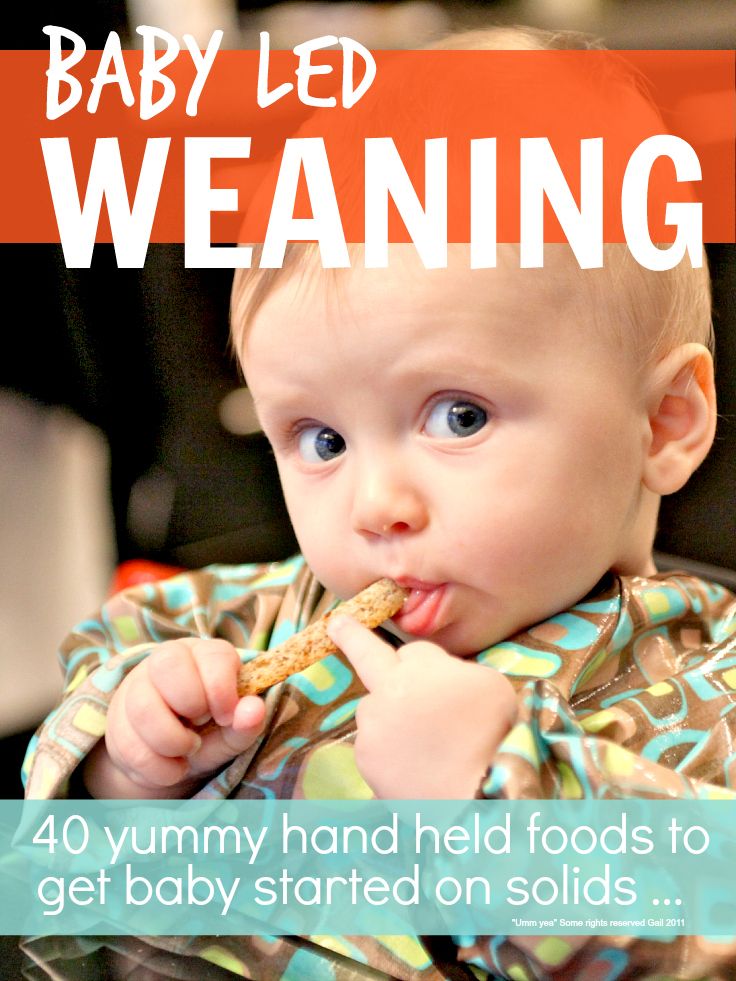
- It is very important to organize a complete drinking regimen. Up to a year, the baby should drink a liter of water, after a year - about one and a half liters per day. However, do not forget to take into account the individual characteristics of the child's body.
- The menu should be varied. Include fruits and vegetables in every main meal.
- Remember that meals should be nutritious enough to cover the body's needs for the necessary elements.
- A child should drink 450 ml of milk and fermented milk drinks per day.
- Cereals and cereal dishes should not be given more than once a day.
- Give bread no more than a couple of times a day.
- Meat dishes are given 1-2 times a day. Their total volume per day is 70 grams. Fish dishes are given no more than 2-3 times a week in a total amount of 200 grams.
- During the week, you can give 2-3 eggs, but no more.
- Consistency of meals should fully correspond to the physiological characteristics of the child's development.






